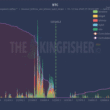The crypto market is abuzz with major developments: Circle’s shares surged after the GENIUS Act cleared a key hurdle, while political and macro forces—including the Federal Reserve’s cautious outlook and simmering Middle East tensions—continue to drive volatility. Catch up on all the latest action and what it means for traders and investors alike.
Circle Rallies as GENIUS Act Passes, Trump Champions Crypto
Circle’s stock soared as investor sentiment strengthened following the passage of the GENIUS Act, a significant milestone crypto advocates hope will spur more institutional involvement. Former President Donald Trump added fuel to the bullish fire, emphasizing crypto’s role in the future financial system and urging the House of Representatives to push the legislation forward. These legislative wins underscore the growing mainstream acceptance—and political visibility—of digital assets.
Fed Patience & Geopolitical Ripples Drive Crypto Volatility
Traders are navigating turbulent waters as the Federal Reserve opts to take a “wait and see” approach amidst global uncertainty. Volatility remains high, in part due to ongoing military activity between Israel and Iran. Meanwhile, institutional moves are shaping the landscape: Jump Trading eyes a crypto comeback, FalconX explores a public listing, and the stablecoin market cap has ballooned beyond $250 billion, marking a rush of capital into stable digital finance.
Key Stats & Figures
- Stablecoin Market Cap: Exceeded $250 billion, reflecting rising demand for digital dollars.
- Crypto Lender Holdings: Crypto lending platforms now manage $60 billion in assets.
- CIRCLE Stock Reaction: Significant price surge following the GENIUS Act passage.
- Ohio’s Crypto Tax Move: BTC payments under $200 are now exempt from state taxes.
Coinbase and CryptoCom Amplify Utility, Public Listings Loom
Major industry players are strengthening the ecosystem for both retail and institutional users. Coinbase introduced “Coinbase Payments” alongside allowing users to pledge USDC as collateral—a bold step that sent its stock climbing. CryptoCom and Deribit are also embracing new stablecoins as collateral, while SOL Strategies declares plans to go public in the US, and Lion Group secures $600 million for its HYPE treasury. These moves highlight the sector’s maturation and the race to offer broader utility in crypto finance.
Conclusion: What This Means for the Market
This surge of regulatory progress, institutional expansion, and product innovation signals that crypto’s mainstream moment is rapidly approaching. With new investment avenues, resilient stablecoin markets, and increasing political interest, the industry looks set for further volatility—but also for robust growth as new players and capital flow in.
